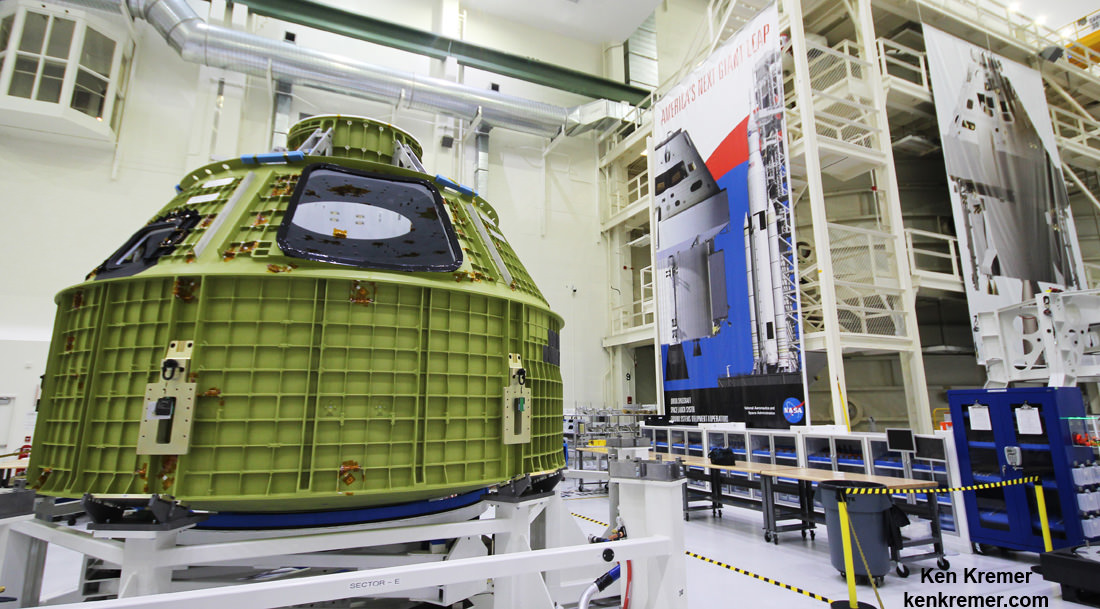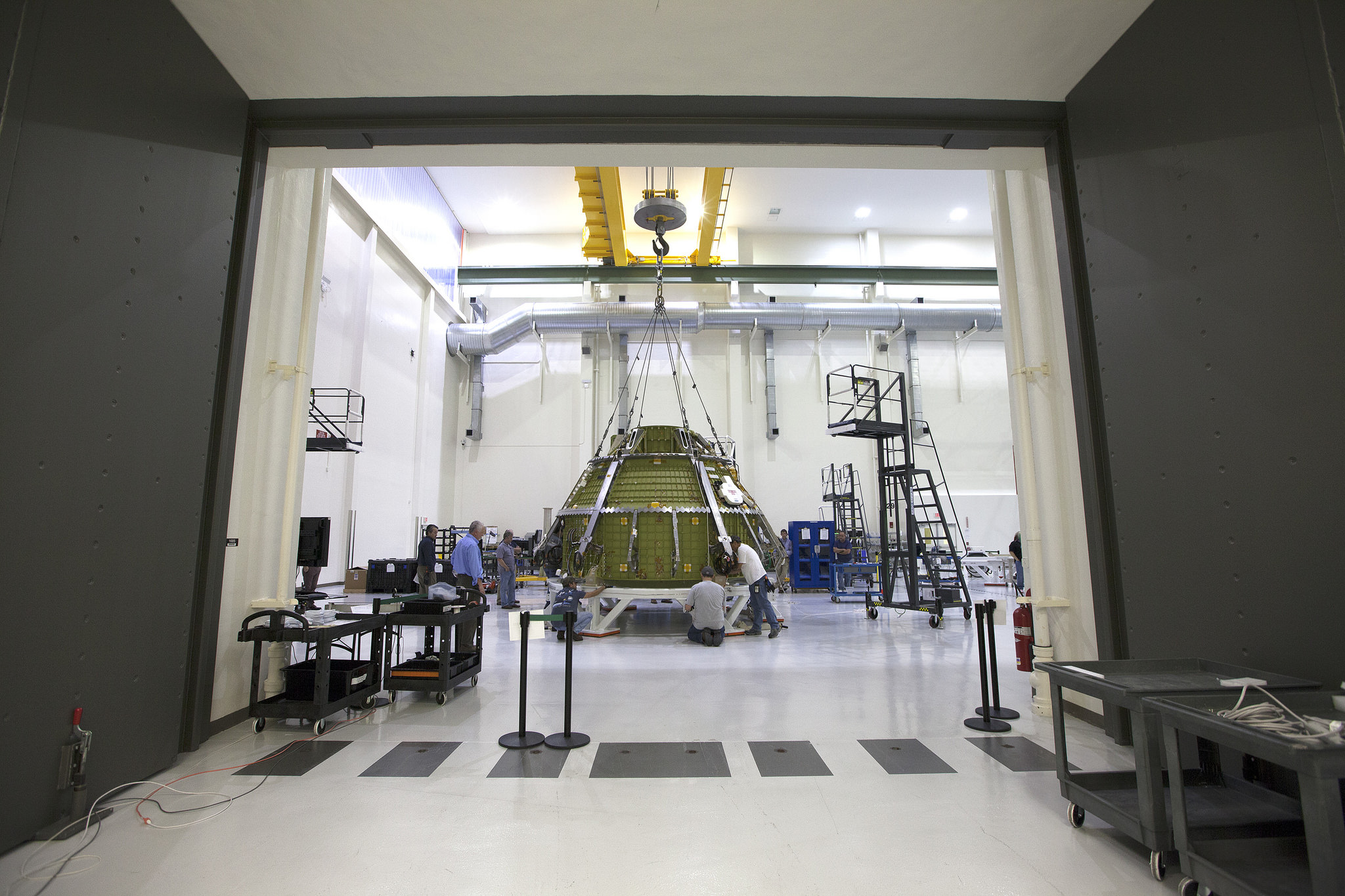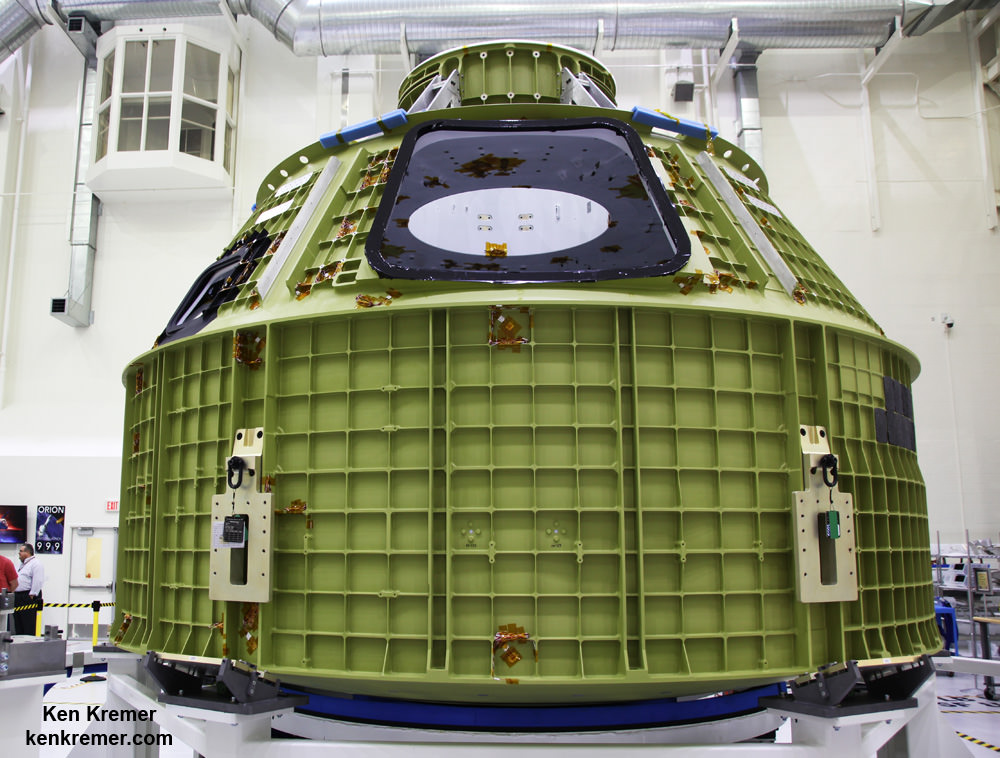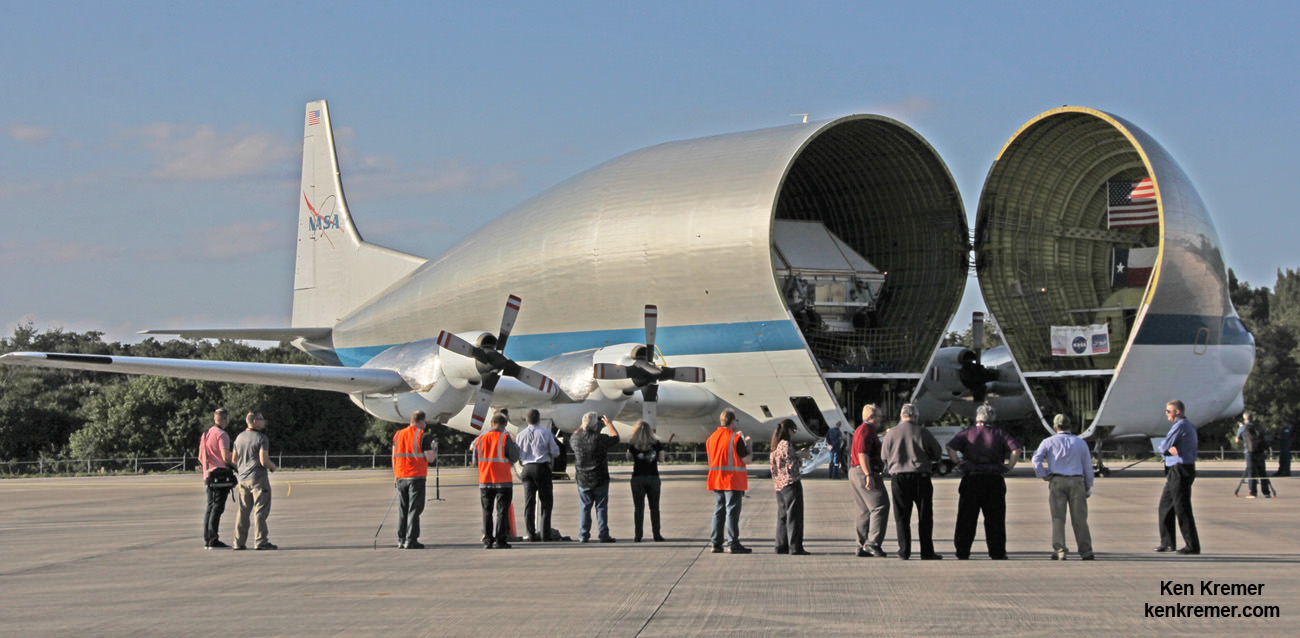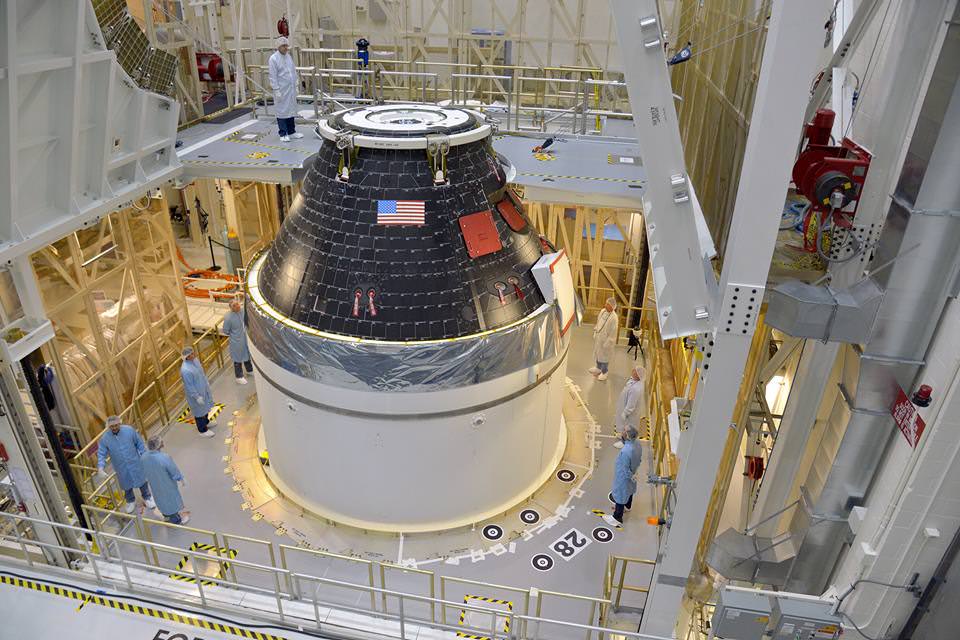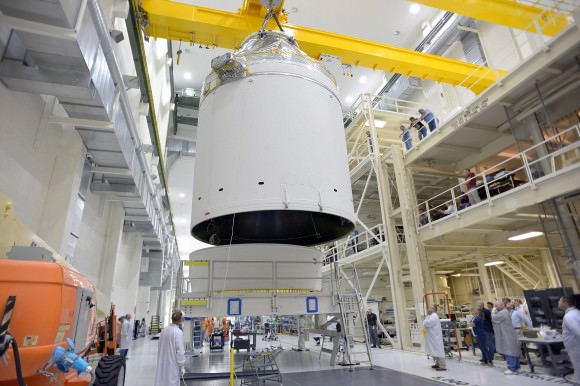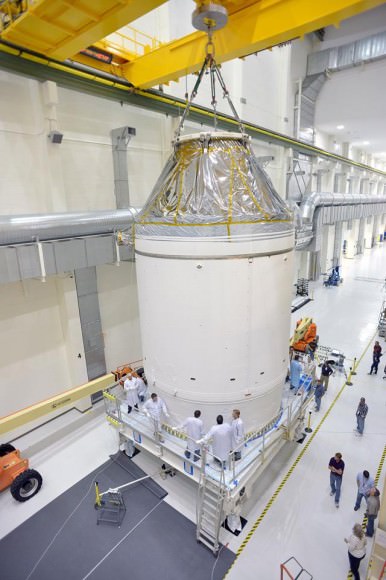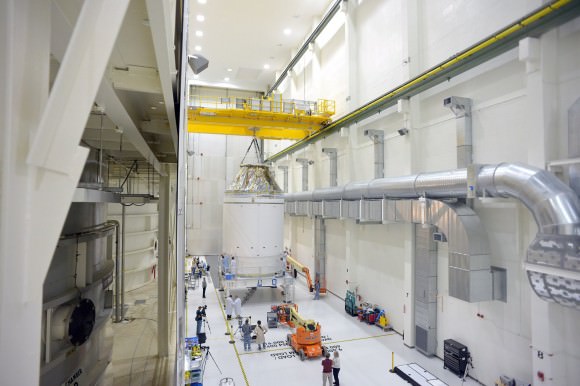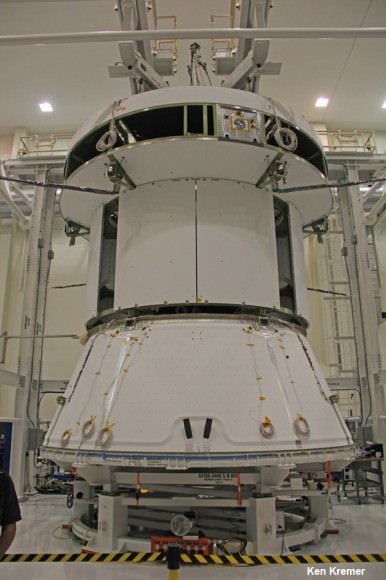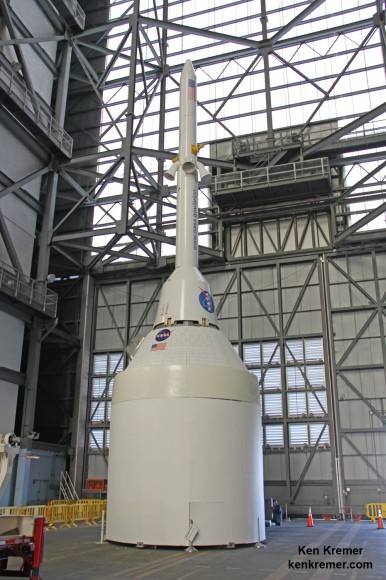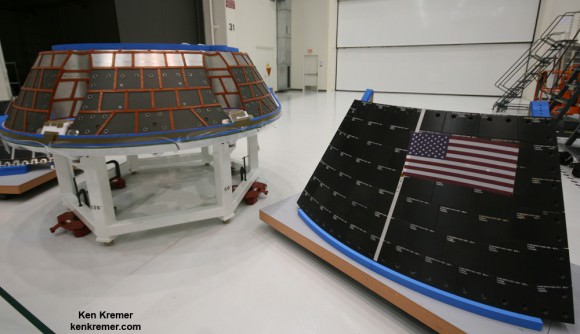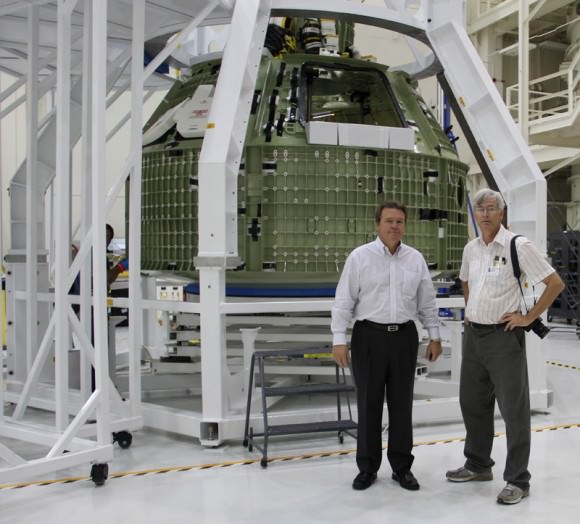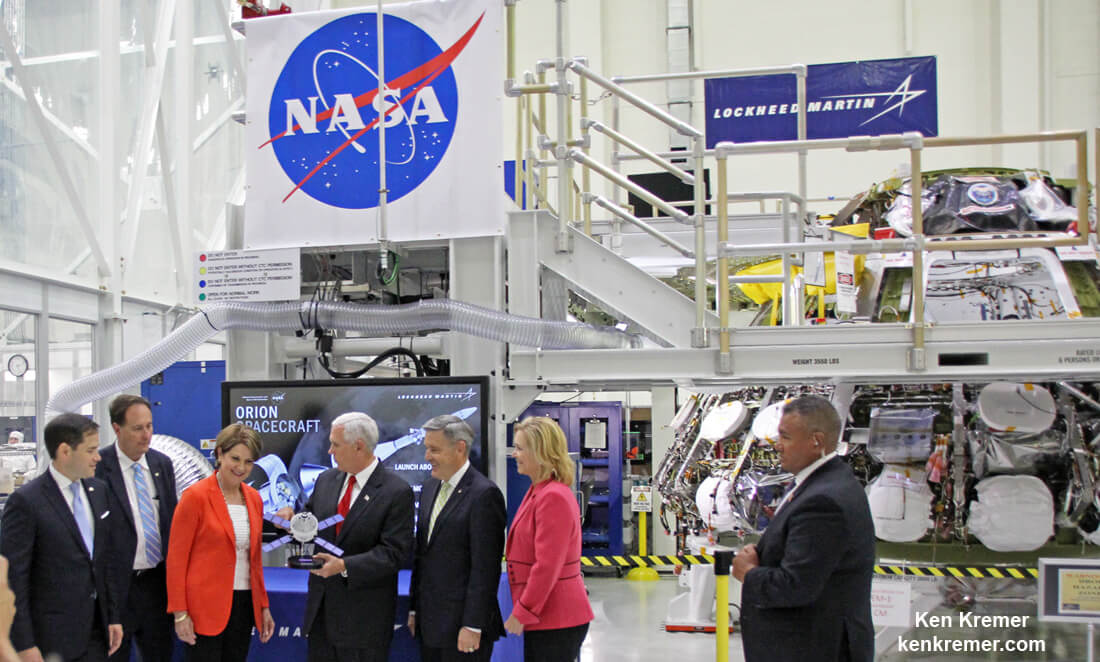
KENNEDY SPACE CENTER, FL – Vice President Mike Pence, during a whirlwind visit to NASA’s Kennedy Space Center in Florida, vowed that America would fortify our leadership in space under the Trump Administration with impressive goals by forcefully stating that “our nation will return to the moon, and we will put American boots on the face of Mars.”
“American will once again lead in space for the benefit and security of all of our people and all of the world,” Vice President Mike Pence said during a speech on Thursday, July 6, addressing a huge crowd of more than 500 NASA officials and workers, government dignitaries and space industry leaders gathered inside the cavernous Vehicle Assembly Building at the Kennedy Space Center – where Apollo/Saturn Moon landing rockets and Space Shuttles were assembled for decades in the past and where NASA’s new Space Launch System (SLS) megarocket and Orion deep space crew capsule will be assembled for future human missions to the Moon, Mars and beyond.
Pence pronounced the bold space exploration goals and a reemphasis on NASA’s human spaceflight efforts from his new perch as Chairman of the newly reinstated National Space Council just established under an executive order signed by President Trump.
“We will re-orient America’s space program toward human space exploration and discovery for the benefit of the American people and all of the world.”
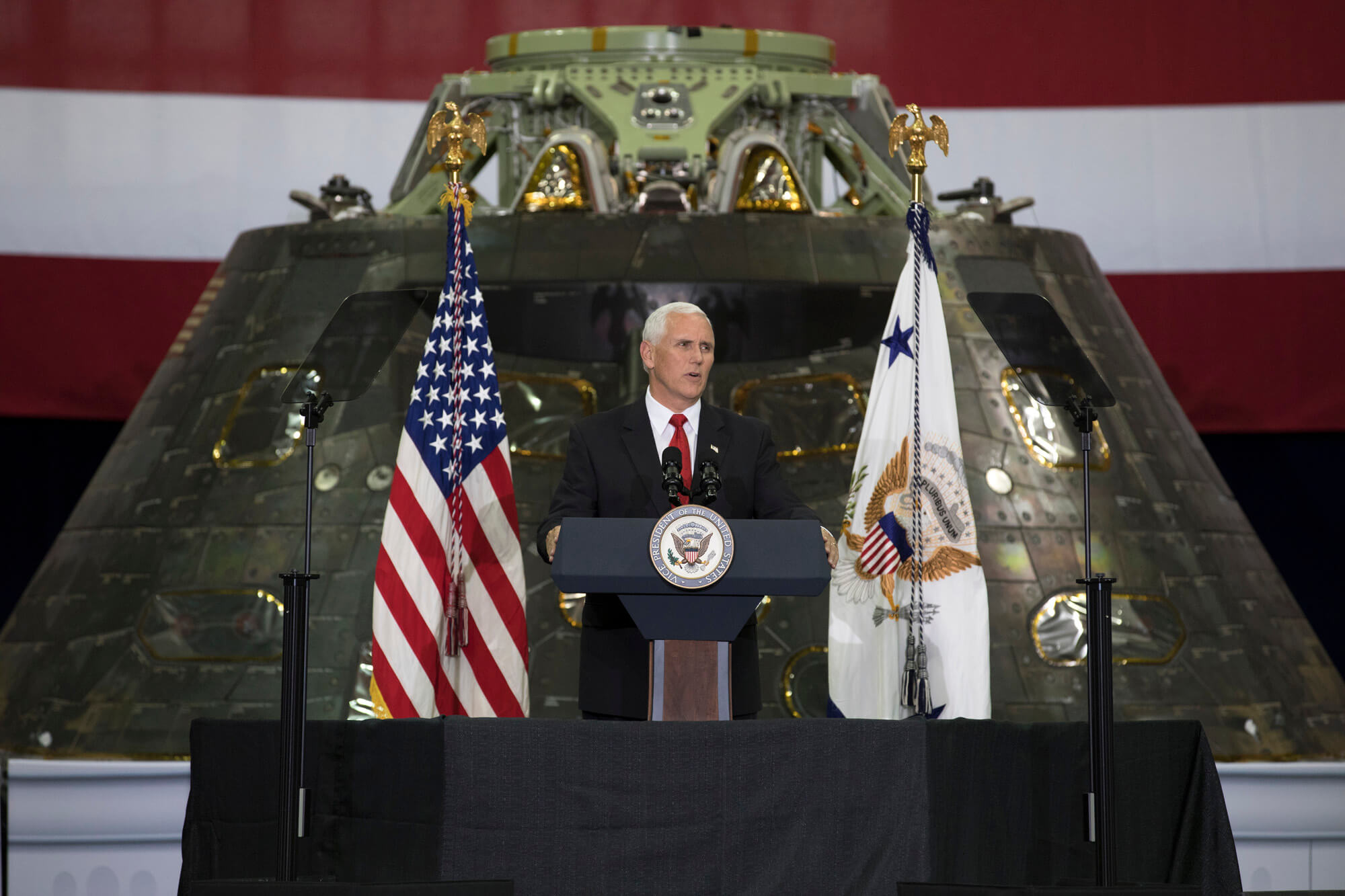
However Pence was short on details and he did not announce any specific plans, timetables or funding during his 25 minute long speech inside the iconic VAB at KSC.
It remains to been seen how the rhetoric will turn to reality and all important funding support.
The Trump Administration actually cut their NASA 2018 budget request by $0.5 Billion to $19.1 Billion compared to the enacted 2017 NASA budget of $19.6 Billion – including cuts to SLS and Orion.
By contrast, the Republican led Congress – with bipartisan support – is working on a 2018 NASA budget of around 19.8 Billion.
“Let us do what our nation has always done since its very founding and beyond: We’ve pushed the boundaries on frontiers, not just of territory, but of knowledge. We’ve blazed new trails, and we’ve astonished the world as we’ve boldly grasped our future without fear.”
“From this ‘Bridge to Space,’ our nation will return to the moon, and we will put American boots on the face of Mars.” Pence declared.
Lined up behind Pence on the podium was the Orion spacecraft flown on Exploration Flight Test-1 (EFT-1) in 2014 flanked by a flown SpaceX cargo Dragon and a mockup of the Boeing CST-100 Starliner crew capsule.
The crewed Dragon and Starliner capsules are being developed by SpaceX and Boeing under NASA contracts as commercial crew vehicles to ferry astronauts to the International Space Station (ISS).
Pence reiterated the Trump Administrations support of the ISS and working with industry to cut the cost of access to space.
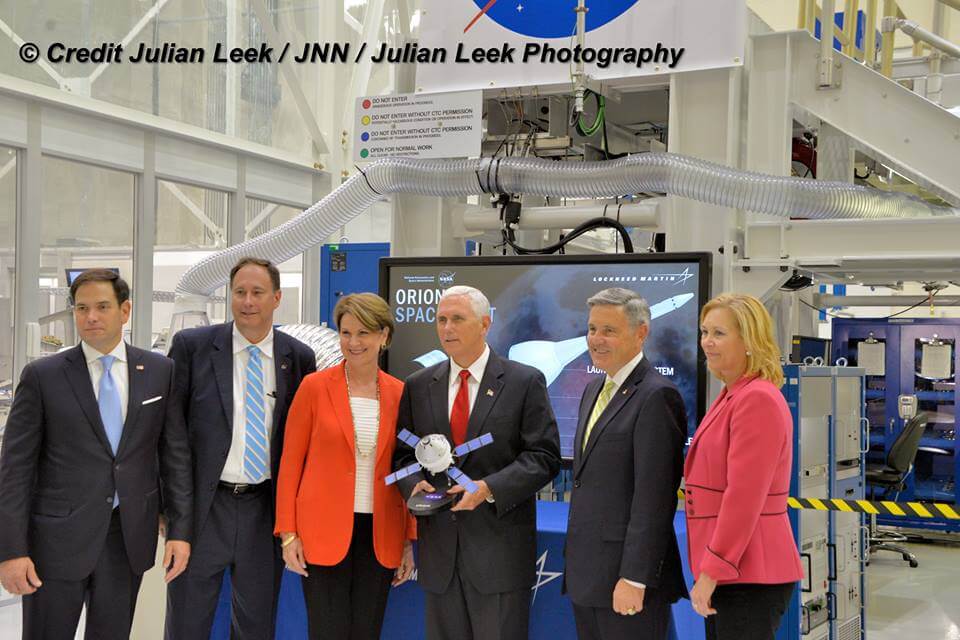
Acting NASA Administrator Robert Lightfoot also welcomed Vice President Pence to KSC and thanked the Trump Administration for its strong support of NASA missions.
“Here, of all places, we can see we’re not looking at an ‘and/or proposition’,” Lightfoot said.
“We need government and commercial entities. We need large companies and small companies. We need international partners and our domestic suppliers. And we need academia to bring that innovation and excitement that they bring to the next workforce that we’re going to use to actually keep going further into space than we ever have before.”
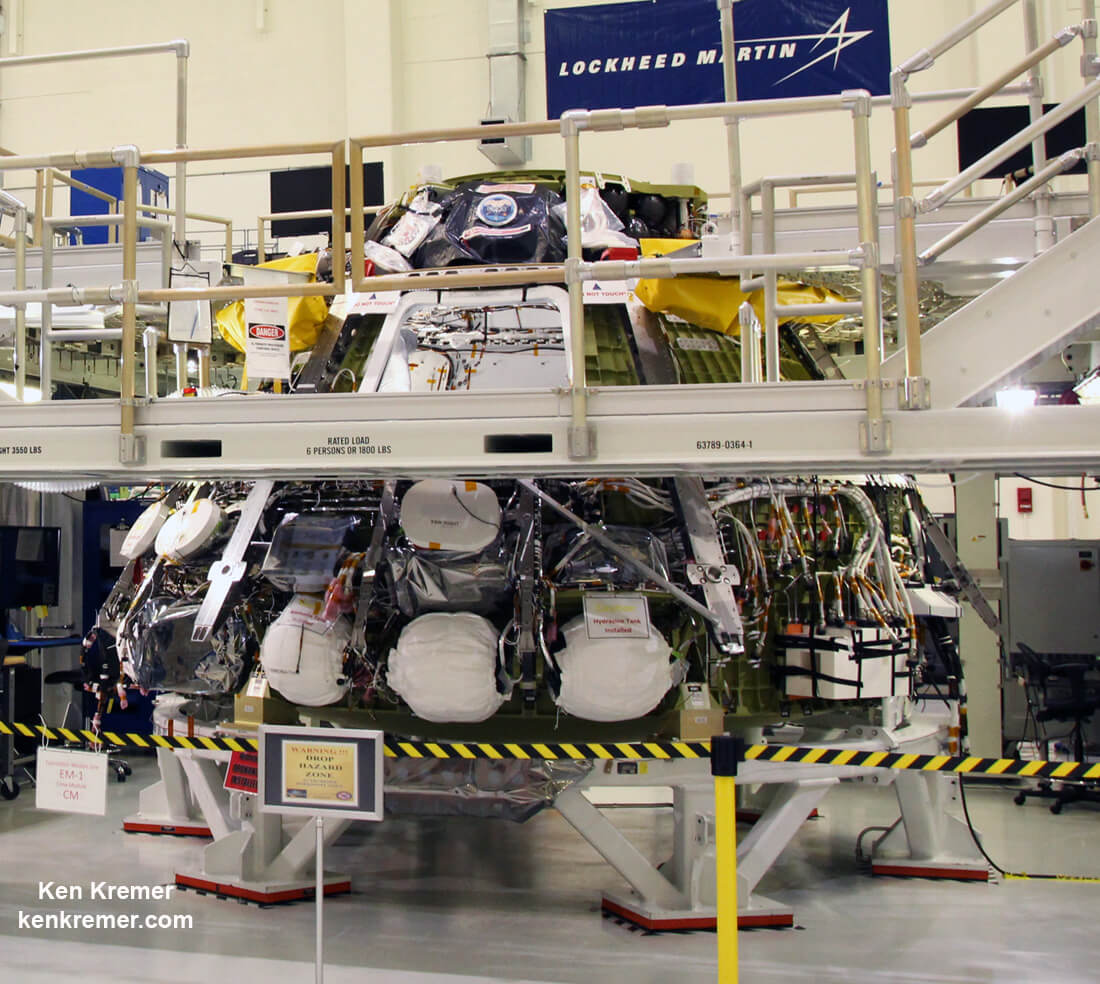
After the VAB speech, Pence went on an extensive up close inspection tour of KSC facilities led by Kennedy Space Center Director and former shuttle astronaut Robert Cabana, showcasing the SLS and Orion hardware and infrastructure critical for NASA’s plans to send humans on a ‘Journey to Mars’ by the 2030s.
“We are in a great position here at Kennedy, we made our vision a reality; it couldn’t have been done without the passion and energy of our workforce,” said Kennedy Space Center Director Cabana.
“Kennedy is fully established as a multi-user spaceport supporting both government and commercial partners in the space industry. As America’s premier multi-user spaceport, Kennedy continues to make history as it evolves, launching to low-Earth orbit and beyond.”
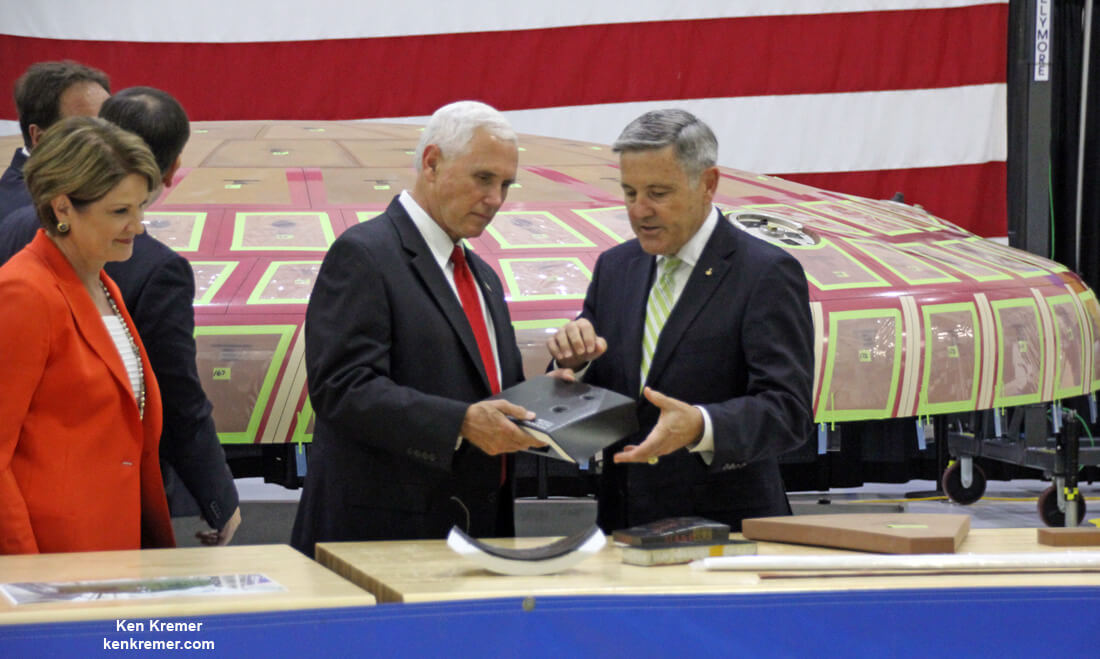
Pence toured the Neil Armstrong Operations and Checkout Building (O & C) where the Orion deep space capsule is being manufactured for launch in 2019 on the first integrated flight with SLS on the uncrewed EM-1 mission to the Moon and back – as I witnessed for Universe Today.
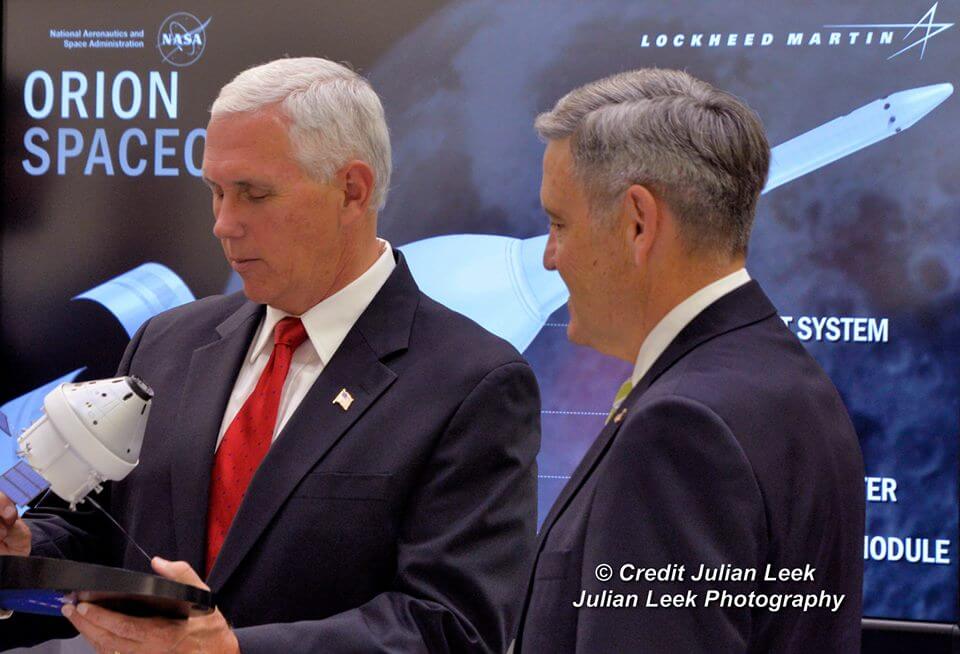
Watch for Ken’s onsite space mission reports direct from the Kennedy Space Center and Cape Canaveral Air Force Station, Florida.
Stay tuned here for Ken’s continuing Earth and Planetary science and human spaceflight news.
